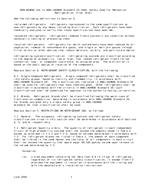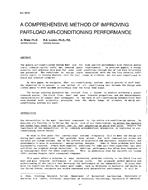This paper is based on findings resulting from an ASHRAE 2017-2018 Graduate Student Grant-In-Aid award.
Lighting systems account for over 11% of total commercial building energy use and represent a similar proportion of energy wasted due to faults (NRCan 2013). Many building managers use aggressive preventative maintenance to address lighting faults and, as such, will often prematurely change bulbs on a schedule. With a typical bulb life of more than 20,000 hours, premature maintenance can generate significant andpreventable waste. Power submonitoring has become popularover the last decade, providing researchers with additionalopportunities to monitor and manipulate live lighting systems. Floor-level power monitoring granularity is not an unreasonable expectation in modern buildings. This paper uses floor-levelbuilding automation system (BAS) data to characterize the lighting system, develop active and passive fault detection approaches, and present the data in a manner that is easy to assimilate. The active approach is based on systemic manipulation and monitoring of the lighting circuits, while the passive approach was based on deductive observations during runtime. It was found that both active and passive fault detection could identify faults within one hour or slightly over onestate change, respectively, and that even with only one powermeter, inferences could be made for multiple circuits.
Citation: 2018 Winter Conference, Chicago, IL, Technical Papers
Product Details
- Published:
- 2018
- Number of Pages:
- 12
- Units of Measure:
- Dual
- File Size:
- 1 file , 1 MB
- Product Code(s):
- D-CH-18-015


